Irene Franklin may or may not have materially contributed melodically to most of the songs she is credited with, but she was a force behind the spread of American ragtime in other parts of the world, and had enough musical experience to have enabled her to compose music. It is likely she contributed more than just a bit to the songs she wrote with her husband Burt Green, and perhaps even her second husband Jerry Jarnagin, so she will be regarded here as a composer.
Irene was born to August "Gus" Franklin and his bride Marguerite Haley in Saint Louis, Missouri, on the cusp of summer in 1885. This should be cleared up as it is an important story point. There are several sources that have assigned her an 1876 year of birth, including Theater's Who's Who, which misreported it at the time of her death. This would have a negative impact on how extraordinary her early career was, and would not make sense in light of some of the early articles on the young girl singer. While no 1900 census listing was found for Irene as she was out of country, she was one of the rare consistent women who used the same date of birth (although it was curiously 1884 in this case) through to her death, including on two different passports. Both of them also give her actual day of birth as June 13, not July as has also been reported at times. As per the official birth record taken in Saint Louis, June 13, 1885 is the most accurate date.
Gus and Mrs. Franklin were both stock company actors and Gus was a stage manager. Therefore, as was the tradition in show business families, they managed to get Irene on the stage as early as six months in the melodrama Hearts of Oak in Chicago, Illinois. By the age of three she was able to do song and dance numbers, and even performed on stage at Tony Pastor's famed hall in New York City in a production of Uncle Tom's Cabin. An early review of Irene, which further disproves an 1876 birth year, appeared in the New York Sun of March 6, 1890:
There is a mite of a girl on the stage of Jacob's Third Avenue this week who is a good deal cleverer than Mr. Gerry's society will permit this town to realize. Her name is Irene Franklin, and she isn't four years old. When she is in less cultivated cities, like Chicago and Cincinnati, she can sing and dance and do a number of other entertaining things which Mr. Gerry can't allow her to perform here. But anyway she is a bright one for her years, as the Third Avenue's audiences have been able to find out, even though she has to repress herself…
There is a chance that the press was slightly misled on Irene's age by a year or so to raise the cuteness factor. Irene stuck to the stage from that point on, with her mother playing more of a backstage supporting role. The youngster was placed in the company of some of the finer actors of the vaudeville circuit at that time, and received positive reviews virtually everywhere she appeared. In 1891 and 1892 she toured the United States and Canada in a production of Editha's Burglar as Editha. During her next major tour, a feature story appeared on Irene in the Salt Lake Herald of August 6, 1893:
Everybody will remember Birdiekens' "That Angel Child." The Dramatic Mirror says: She is the only bad little girl on the stage, and her real name is Irene Franklin. It is not her fault that she is naughty. The man that wrote the play in which she appears, "The Prodigal Father," must be blamed for her little sins. He created the character of Birdiekins and Miss Irene simply carries out his idea.
Off the stage, Irene is quite as good as anyone could wish her to be, but on the stage she is an adorable little imp. If she really had all the time, her acting would not be remarkable, for then she would merely have to be natural. As it is she is one of the best of our child actresses…
She is not quite seven years old, and she is rather small for her age. Her eyes are blue and her hair is a very pretty shade of auburn. She is quite as amusing in private life as she is on the stage, for she is very bright and delights her friends with her witty remarks.
By the late 1890s Irene was taking on more advanced juvenile roles, and given more to sing. She even started writing some of her own material, mostly as an exercise. After a sweep of the west coast from Los Angeles to San Francisco in the early months of 1900, singing everything from coon songs (for which she was less known) to cute comedic numbers, she set sail across the Pacific to make new conquests. Mrs. Franklin's family was from Australia, so she had connections there and arranged for a tour for Irene and some of her company in conjunction with a visit. They played in New Zealand in June, the proceeded to Australia in July with Rickard's Tivoli Opera Company. Entrepreneur Percy Dix picked her up later in the year for an extended engagement at a good salary, and she remained with him through the end of the year.
During a break in Melbourne in early 1901 Gus returned to America. Shortly after that Irene was blessed with a baby sister. She was back with Rickard's by May. In June Irene and her mother received word that Gus had died at Governor's Hospital in New York of throat cancer. This and lingering complications from birth put Mrs. Franklin into a medical tailspin. The cancer diagnosis brought on by stress remains suspect, but Irene's mother died in December in Sydney, Australia. The Otago [Australia] Witness broke the story prior to her death on November 27, 1901:
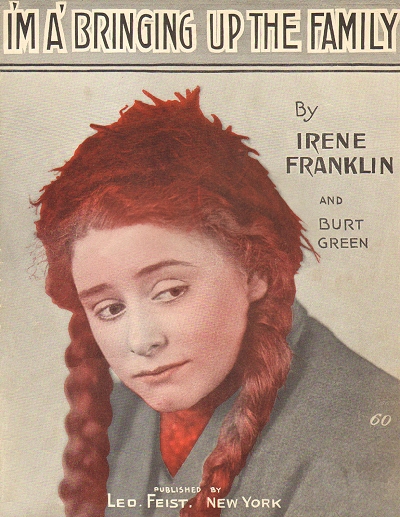
The many friends and admirers of Dainty Irene Franklin will be sorry to hear that great trouble has been her lot since leaving Adelaide (says the Adelaide Critic of the 9th Inst.). In Auckland news came of the death of her father in New York. The shock was so much for her mother it brought on cancer, and the doctors advised Mrs. Franklin to go to London. Before they could sail, however, the dread disease had gone to the brain. She could recognize nobody. The doctors now give a faint hope that the patient may possibly live for a few weeks. She is in a private hospital in Sydney, surrounded with every comfort and skilled attention. The saddest thing of all is that the Dainty one has now to support and bring up her little girl sister, who was born in Melbourne just nine months ago, and was compelled to leave her mother in order to fulfill an engagement in pantomime at Manchester... One of the most pathetic sights on the outgoing mailboat was the black-robed figure of this young girl, bending in tender solicitude over her little sister, who slept peacefully in its nurse's arms.
All of this took the wind out of the orphaned teenager, who had to take her baby sister Melbourne (named after her birth city) with her to Europe for several engagements, then home to New York. For the next two years Irene struggled to perform, not receiving the high salaries that her talent demanded. New York vaudeville theater entrepreneur Tony Pastor was sympathetic to her case and tried to keep her engaged in order to support Irene and her sister. She was also given her own material to perform from time to time. Pastor reportedly recognized her untapped talent, and concluded that she needed a partner to play off of and utilize her musical comedy gifts and subtle sexuality. That person was also in need of a partner himself, a pianist who was formerly with Pastor named James Burton "Burt" Eugene Van Tassel Green.
Burt, who was around a decade older than Irene, was more of a self-taught musician than one with formal training. Born in Stanton, Michigan, in 1875, he went into the hardware business in his late teens. But music was in his blood and he made an attempt to secure stage work, eventually landing a job as an accompanist for Pastor's theater. Burt was able to adapt well to others, and improvise or vamp when necessary. He married Helen van Campen, a Morning Telegraph columnist in Manhattan, in 1895, and they had two children over the next few years. The 1900 census showed him on the road in New Hartford, New York, listed as a musician.
Irene and Burt were first paired up in 1904 and Pastor's instincts played out correctly within a year. Burt thought her to be lacking in material, not talent, and even helped her with some wardrobe needs. It was clear by 1905 that they were in love with each other. Being an adventurous journalist with a world view that was acquired through global travel, Helen, who liked Irene very much, felt that if Burt was so in love with her that they should be married. Not only did she willingly grant him a divorce, she wrote a feature article about the happy ending of what could have been a contentious love triangle. Wed in May 1905, Irene and Burt went on the road for the next several years, often returning to New York City for well-reviewed performances. Burt wrote some new material for Irene, and she would also contribute in some way. Irene joked that her voice consisted of only "five notes and a squeak," but she managed to more than convince audiences that she was a competent singer. She also appeared in a few stage shows and musicals, but shined best in her one-on-ones with Burt.
Being an adventurous journalist with a world view that was acquired through global travel, Helen, who liked Irene very much, felt that if Burt was so in love with her that they should be married. Not only did she willingly grant him a divorce, she wrote a feature article about the happy ending of what could have been a contentious love triangle. Wed in May 1905, Irene and Burt went on the road for the next several years, often returning to New York City for well-reviewed performances. Burt wrote some new material for Irene, and she would also contribute in some way. Irene joked that her voice consisted of only "five notes and a squeak," but she managed to more than convince audiences that she was a competent singer. She also appeared in a few stage shows and musicals, but shined best in her one-on-ones with Burt.
 Being an adventurous journalist with a world view that was acquired through global travel, Helen, who liked Irene very much, felt that if Burt was so in love with her that they should be married. Not only did she willingly grant him a divorce, she wrote a feature article about the happy ending of what could have been a contentious love triangle. Wed in May 1905, Irene and Burt went on the road for the next several years, often returning to New York City for well-reviewed performances. Burt wrote some new material for Irene, and she would also contribute in some way. Irene joked that her voice consisted of only "five notes and a squeak," but she managed to more than convince audiences that she was a competent singer. She also appeared in a few stage shows and musicals, but shined best in her one-on-ones with Burt.
Being an adventurous journalist with a world view that was acquired through global travel, Helen, who liked Irene very much, felt that if Burt was so in love with her that they should be married. Not only did she willingly grant him a divorce, she wrote a feature article about the happy ending of what could have been a contentious love triangle. Wed in May 1905, Irene and Burt went on the road for the next several years, often returning to New York City for well-reviewed performances. Burt wrote some new material for Irene, and she would also contribute in some way. Irene joked that her voice consisted of only "five notes and a squeak," but she managed to more than convince audiences that she was a competent singer. She also appeared in a few stage shows and musicals, but shined best in her one-on-ones with Burt.One sketch and song the pair was known for was titled Expression, in which she would show a range of emotions or characters simply by changing expressions, or perhaps adding or using a scarf or hat or vest. Irene was also adept at playing coy little girls, years before Fanny Brice and her famous Baby Snooks character. One of Irene's props was her natural red hair, which was at times down to her waist, and could be used to emulate little girl soubrettes or coquettish women with naughty intentions. It was this hair that, in part, immortalized Irene.
In 1908 Burt and Irene finally released a song they had been developing for a while. According to Irene, "It was sort of an accident. The lyric was dreadful. It didn't rhyme, it didn't scan, it didn't seem to be much of anything. It's probably the worst lyric I ever wrote. The public took it to its breast as its own child." That song was Redhead, and it became a signature tune of the act for quite some time.
Redhead! Redhead! Gingerbread head!; Carrots! Bricktop! Golden-rusthead!
Rodekopft! Sorrel-top! Gee I'd Like to push them in the pond!
Redhead! Redhead! Gingerbread head!; Freckle-face! Strawberry-blondhead!
Here's a white horse; hide your head! Why wasn't I born a blonde?
The tune was popular enough that it was repurposed in 1910 as a piano rag. Both covers featured that "I'm so innocent, aren't I" signature look of the little girl persona of Irene, with maybe something else on her mind, that still makes it a collectible into the 21st century, this despite how many copies of both were ultimately sold.The cover image should not be underestimated in this regard, since it had the same type of appeal that the iconic Herb Alpert & the Tijuana Brass Whipped Cream and Other Delights album cover had in the summer of 1965.
The 1910 census showed Burt and Irene residing at 14 West 49th Street in Manhattan with Burt listed as a composer and actor, and Irene an actress. Early in the year Irene and publisher Leo Feist had won a court victory,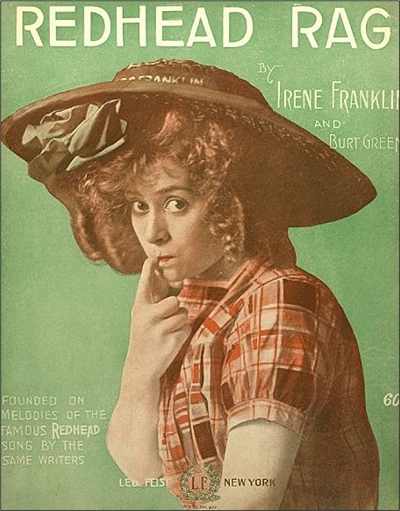 the first case that cited the new copyright laws for the United States, concerning infringement of intellectual material. The result was noted in the Music Trade Review of January 1, 1910:
the first case that cited the new copyright laws for the United States, concerning infringement of intellectual material. The result was noted in the Music Trade Review of January 1, 1910:
 the first case that cited the new copyright laws for the United States, concerning infringement of intellectual material. The result was noted in the Music Trade Review of January 1, 1910:
the first case that cited the new copyright laws for the United States, concerning infringement of intellectual material. The result was noted in the Music Trade Review of January 1, 1910:The first legal action under the new copyright law in the matter of alleged infringement through imitation has recently been decided, for the time being, in favor of the plaintiffs. The United States Circuit Court, in this city, granted a temporary injunction asked for by Irene Franklin (Green), the singer; Leo Feist, the publisher, and others against Edna Luby, the mimic. Miss Luby is enjoined from singing in public "I'm A-Bringing Up the Family" until the pending action has been finally decided. Miss Luby used the song in imitation of Miss Franklin. The plaintiffs set forth that the song was written as part of a copyrighted sketch entitled "The Queen of Vaudeville." The injunction, if made permanent, will be far reaching, and the precedent will protect singers throughout the country. It will also protect music publishers, although it is doubted if they are so anxious to be "protected" from the widespread use of their publications as are the singers…
Hitting the road again on the B.F. Keith theater circuit, Irene and Burt found increasing favor wherever they went, as noted in this Boston Globe review from late January 1910:
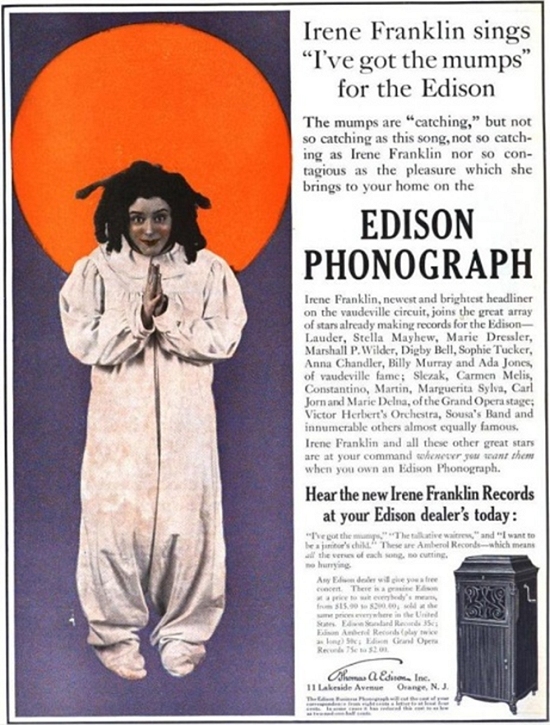
There are singers and singers. Some are good and some are better. Sometimes the best cannot be said to be favorites. However, Irene Franklin is one of the best and also the greatest individual favorite to appear at Keith's in any season.
Of course you've heard 'Red Head,' but if you haven't heard Irene Franklin sing it, your greatest treat is yet ahead of you. It's an old song now, but like all original successes, the original singer does it best. That's the way it is with 'Red Head.' No matter how well Miss Franklin sings 'I've Got the Mumps,' 'I Don't Care What Becomes of Me' and 'I'm A-Bringing Up the Family,' Keith's audiences have insisted that she give them 'Red Head.' Then you have a chance to see those funny legs.
One of the catchiest songs added to Miss Franklin's repertoire this season is 'I've Got the Mumps.' The rising curtain shows her sitting on the edge of a little bed coddling a doll. Then she runs down to the footlights, and dressed in a regulation 'nightie,' tells all about how good it is to have the mumps, how she can stay in bed till 10 o'clock mornings and—well, she offers to rub against you for a nickel, giving you the mumps and all its attendant pleasures. Yes, this is quite the best of the new songs."
Then Irene decided to quit vaudeville in April to join the Lew Fields company with a three-year contract to provide acts based around her and Burt, the first 1910 production being The Summer Widowers. There was some disbelief in the trades, including a sardonic post in the Music Trade Review that iterated in three consecutive one sentence paragraphs that Irene was quitting vaudeville and giving a farewell performance. For good. No, really. Or so was the tone.
Irene actually did as she said and stayed on the "legitimate" stage for the next several years. But even more exciting for her fans, she committed her voice - "I can sing two notes and fake seven" - to some Columbia records and three Edison discs in late 1911. One more Edison was recorded in 1913, and all four were transferred to Blue Amberol cylinders for re-release. This notice is from the Music Trade Review of January 6, 1912:
The Edison people are announcing a series of records by the talented vaudeville star, Irene Franklin, famous the country over as a singer of character songs. Burt Green, her husband and costar en tour, accompanies her on the piano in these records, in which she sings original compositions by herself and Mr. Green. As Irene Franklin has never before performed for any music-reproducing instrument, her singing for the Edison is expected to arouse great interest, and we are assured by the company that these records are "Irene-true-to-life."
The act was interrupted on a couple of occasions. The first time had been in 1907 when Irene gave birth to daughter Margaret, then again in 1914 when Elizabeth was born.
But she remained on the stage as much as possible through the late 1910s, keeping her children at home instead, and admittedly out of show business. Irene also recorded more of her pieces for Columbia Records in 1915 and Emerson in 1917 with Burt at the piano. After doing The Passing Show of 1917, Burt and Irene traveled to England in 1917 and 1918 to entertain for soldiers as part of the Over There Theatre League hosted by the YMCA. The Greens were back for the 1920 census taken in Manhattan, which showed that Burt's son Burton C. from his first marriage and Irene's sister Melbourne were lodging with the couple and their children.
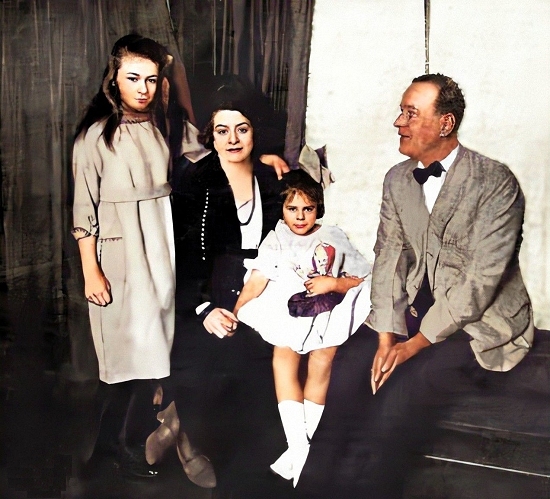 |
Burt was diagnosed with Bright's Disease [now referred to as chronic nephritis] in the early 1920s, a kidney ailment which made it difficult for him to continue performing. Irene had to perform in the Greenwich Village Follies of 1921 without her longtime partner. They made one last trip to England, then most of Europe, from February through the summer of 1922. Then Burt came back to Manhattan with Irene, passing away on November 10 at their Mount Vernon, New York, home. Irene Franklin Green had lost her love, her muse and what she perceived as the support system responsible for her success.
Irene soldiered on slowly over the next two years, and made a few stage appearances in revues, even turning up in the trades endorsing Milton Grand Pianos. Leo Feist collected her songs, by now nearly antiques, into a folio released in 1926. She was finally called up to the big leagues once again, performing at the highly-regarded Palace Theater in Manhattan several times between 1924 and 1931.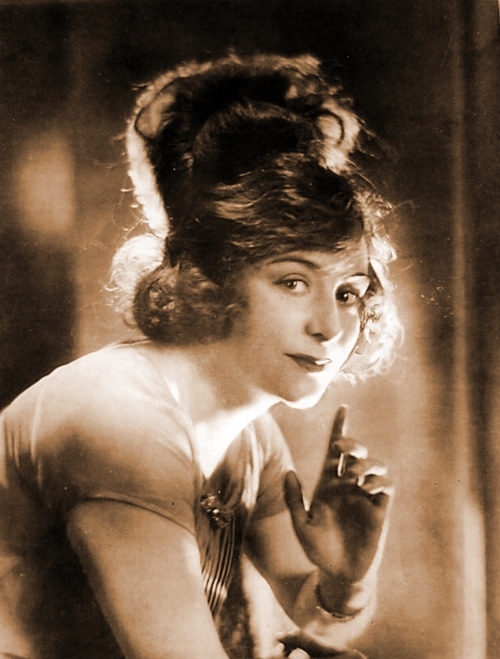 It was during these engagements that she acquired a new talented accompanist and composer, Jerry Jarnagin. Irene and Jerry married in on July 12, 1925, just after their return from an Australian performance tour. In 1927, on the cusp of the era of sound films, the couple moved to Hollywood, California. Irene had hoped to act and Jerry to write songs, which was already a lucrative business following the release of several Warner Brothers Vitaphone shorts.
It was during these engagements that she acquired a new talented accompanist and composer, Jerry Jarnagin. Irene and Jerry married in on July 12, 1925, just after their return from an Australian performance tour. In 1927, on the cusp of the era of sound films, the couple moved to Hollywood, California. Irene had hoped to act and Jerry to write songs, which was already a lucrative business following the release of several Warner Brothers Vitaphone shorts.
 It was during these engagements that she acquired a new talented accompanist and composer, Jerry Jarnagin. Irene and Jerry married in on July 12, 1925, just after their return from an Australian performance tour. In 1927, on the cusp of the era of sound films, the couple moved to Hollywood, California. Irene had hoped to act and Jerry to write songs, which was already a lucrative business following the release of several Warner Brothers Vitaphone shorts.
It was during these engagements that she acquired a new talented accompanist and composer, Jerry Jarnagin. Irene and Jerry married in on July 12, 1925, just after their return from an Australian performance tour. In 1927, on the cusp of the era of sound films, the couple moved to Hollywood, California. Irene had hoped to act and Jerry to write songs, which was already a lucrative business following the release of several Warner Brothers Vitaphone shorts.Irene and Jerry remained bicoastal for a while, returning to Manhattan for select engagements like the Palace. In 1928 they toured Europe, both revisiting some of the places they had seen during World War I. Her final show on Broadway would be Sweet Adeline, which ran from 1929 into 1930, but not with her in the lead. The Jarnagins also started to appear on the radio waves in the late 1920s, with several appearances found around the country and on some of the networks by the early 1930s. While neither of them found great success in Hollywood, they managed to snag a few assignments. However, the Great Depression had taken hold, and it was difficult to find steady work without a film contract. After one sound short that featured Irene in 1929, the remainder of films she would do over the next decade were either shorts or B-grade pictures with mostly small comic parts.
On August 19, 1934, Jerry and Irene had been assured that they could show up for a screen test the next day for the film version of Sweet Adeline, which they had performed in while in New York a few years prior. despite money issues in their household, there seemed to be promise. That evening, while Irene was serving a pre-wedding dinner for her niece from Lake Charles, Louisiana, Dorothy Watson, her fiancée William Green, and family friend Mrs. Wally Klein, Jerry excused himself from the conversation to wash up for dinner. A few moments later they heard a muffled pop. Irene went to investigate and found Jerry in their living room slumped in a chair with a bullet through the temple, and the gun lying in another chair six feet away.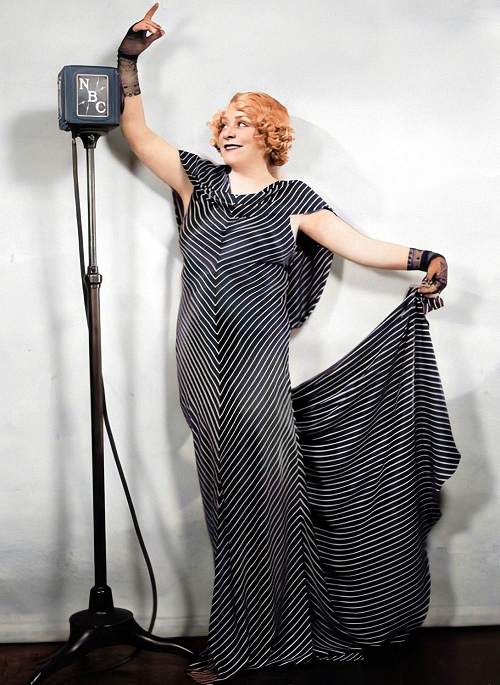

This became one of the bigger Hollywood stories of that year, particularly since Irene was adamant that the evidence suggested that Jerry was murdered, even though the police ruled his death a suicide. Her suspect was a former houseboy who had been dismissed a month earlier for an assault on Irene with a telephone and the table it was on, all for being denied use of the couple's car for an evening. He had been held for trial in July, and eventually released. Jerry had been optimistic and showed none of the usual signs of a suicide victim. That and the distance which the gun had been thrown, unlikely since he died instantly, was suspect, but the courts initially upheld the police investigation. Irene hired private investigators to find evidence to the contrary, but officials said it would have been impossible for the houseboy, or whoever, to exit the home without being seen. despite the ruling Jarnagin's death remains a mystery to this day, analogous in some ways to the death of Superman actor George Reeves two decades later.
Now widowed again and largely out of work, Irene's woes increased when in late 1939 she was diagnosed with neuritis, although the type was unspecified. For the 1940 enumeration taken in Los Angeles, she was seen living with Emma J. Morrison, and, snubbing the film industry that had forgotten her talents, working in the "legit theater." In mid-1940 Irene retreated back to Englewood, New Jersey, to the Actor's Fund Home, designed to help indigent theatrical types. She had been hit hard by the plunge in stocks, and the battles to clear Jerry of suicide charges drained her finances even further. Now impoverished she spent her last several months deteriorating in Englewood.
Irene Lucille Marguerite Franklin Green Jarnagin, the lass who charmed many with her beguiling ways and comedic songs for so long, suffered a stroke on June 12, 1941, and succumbed to it on June 16. She was fondly remembered, but for some in the East it was too little too late. Still, the Redhead lives on through the memory of her music, recordings, and those ragtime nights under the white lights of Broadway.

 Known Compositions
Known Compositions